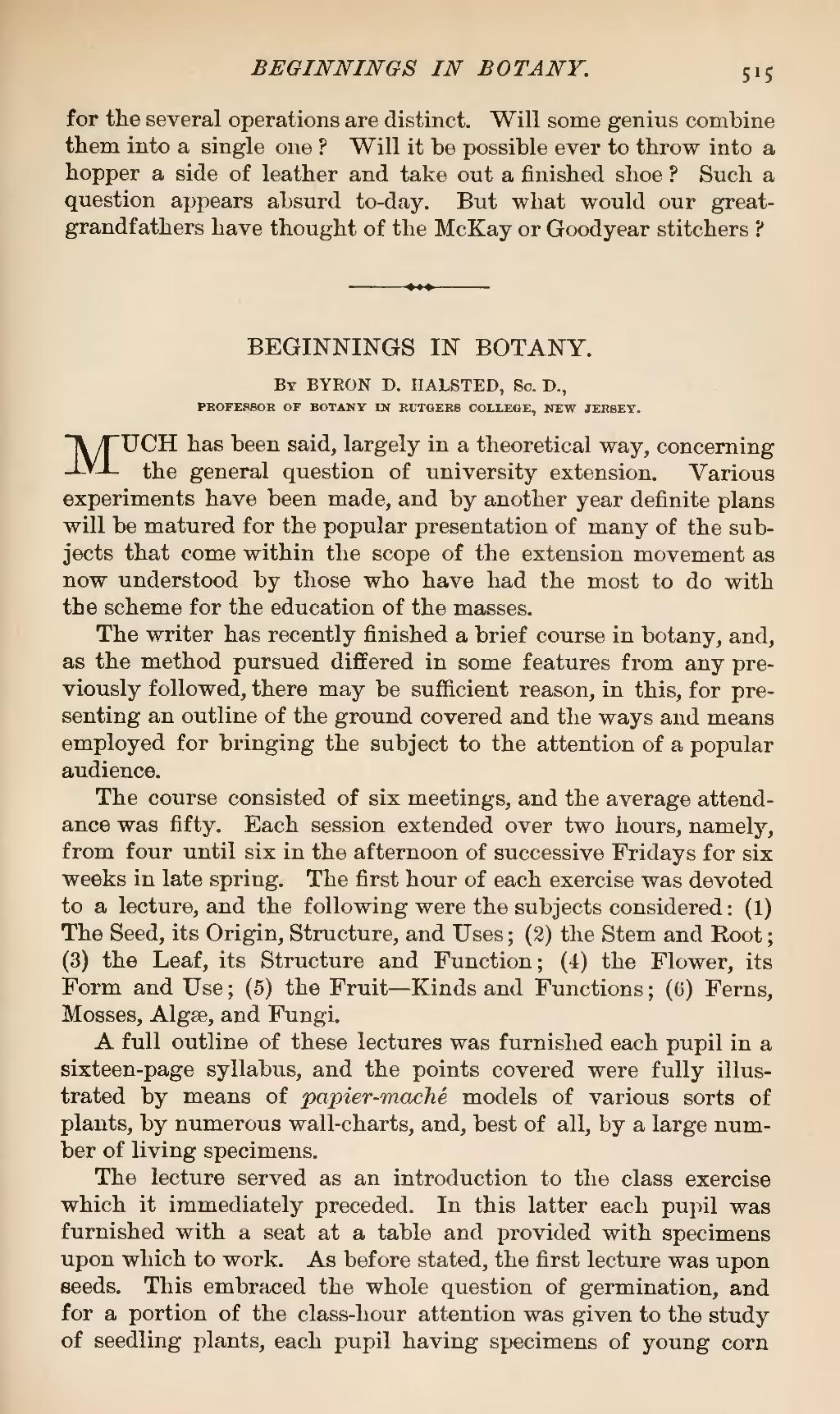for the several operations are distinct. Will some genius combine them into a single one? Will it be possible ever to throw into a hopper a side of leather and take out a finished shoe? Such a question appears absurd to-day. But what would our great-grandfathers have thought of the McKay or Goodyear stitchers?
| BEGINNINGS IN BOTANY. |
By BYRON D. HALSTED, Sc. D.,
PROFESSOR OF BOTANY IN RUTGERS COLLEGE, NEW JERSEY.
MUCH has been said, largely in a theoretical way, concerning the general question of university extension. Various experiments have been made, and by another year definite plans will be matured for the popular presentation of many of the subjects that come within the scope of the extension movement as now understood by those who have had the most to do with the scheme for the education of the masses.
The writer has recently finished a brief course in botany, and, as the method pursued differed in some features from any previously followed, there may be sufficient reason, in this, for presenting an outline of the ground covered and the ways and means employed for bringing the subject to the attention of a popular audience.
The course consisted of six meetings, and the average attendance was fifty. Each session extended over two hours, namely, from four until six in the afternoon of successive Fridays for six weeks in late spring. The first hour of each exercise was devoted to a lecture, and the following were the subjects considered: (1) The Seed, its Origin, Structure, and Uses; (2) the Stem and Root; (3) the Leaf, its Structure and Function; (4) the Flower, its Form and Use; (5) the Fruit—Kinds and Functions; (6) Ferns, Mosses, Algæ, and Fungi.
A full outline of these lectures was furnished each pupil in a sixteen-page syllabus, and the points covered were fully illustrated by means of papier-maché models of various sorts of plants, by numerous wall-charts, and, best of all, by a large number of living specimens.
